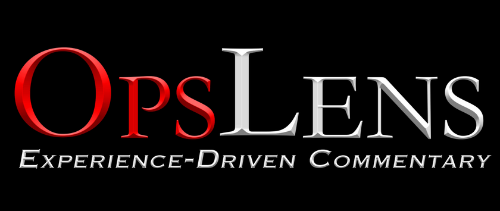“The French Foreign Legion and the British Gurkhas present a potential historical possibility to answer US security concerns. The US military needs motivated, engaged, and effective local troops that are committed to the United States’ success to meet US military objectives…”
The US military is heavily engaged throughout the world, including Europe, Africa, the Middle East, Asia, and Central and South America. While the wars in Iraq, Afghanistan, and against ISIS are ongoing, do we need to examine the current composition of the US military? Namely, is the current ethnic force composition the most useful and in the best long-term interests of the US military?
US Military Objectives Across the Globe
The US military objectives across the globe are simple goals combined with complex operating environments. The military objectives are for both the United States and its allies to create an environment of stability. The US military wants to:
- Defeat and mitigate the short and long-term ability of fundamentalist Islamic terrorism to disrupt US objectives.
- Enable security conditions that support stability, the rule of law, state security, and economic viability.
- Maintain the resources within the United States that allow the continued manning, resourcing, training, equipping, and deployment of superior combat forces.
- Prevent and deter the threat of WMD toward the United States and its allies.
- Prevent the rise of non-political actors with military-style power and capabilities.
- Prosecute successfully ongoing US military operations across the globe.
- Safeguard the political, economic, population, and safety interests of the US and its allies.
The central point for the US military is that the United States must engage and enable foreign populations to support and assist the US military to accomplish the defense objectives of the United States.
The US Military as a Positive and Enabling Force of Diversity Across the Globe
I had a very common experience with diversity in the US Army. When I was headquarters company commander at Fort Carson, Colorado in the late 1990s, I had a professional, diverse headquarters staff that was a small reflection of the United States. My company first sergeant, the top non-commissioned officer in the unit, was from a cowboy family in Wyoming; one of my support sergeants was a refugee from Thailand; and a support specialist was a religious leader in the Wiccan faith. We had supply personnel from inner Chicago and the rural Georgia-Alabama border, a world-class mountain biker from Utah, and naturally, truck mechanics from Texas. The only thing we were missing was the kid from Brooklyn.
Most of us in our unit had spent close to two years in and out of Bosnia-Herzegovina working with the diverse local population and foreign military forces, most of whom were members of NATO. We understood that working in an organization that was internally diverse and focused on external diversity was the only way to accomplish a global mission successfully. Diversity was an enabler of our success, rather than a distraction.
Toward a Model of the French Foreign Legion and the Gurkhas
The French Foreign Legion and the British Gurkhas present a potential historical possibility to answer US security concerns. The US military needs motivated, engaged, and effective local troops that are committed to the United States’ success to meet US military objectives. Therefore, the United States should train, pay, organize, equip, and house these local military forces as members of the new United States Defenders of International Development (USDID). The USDID forces would be trained to enable US military operations, guard US interests in the region, and work with local US forces as well as government forces. The USDID forces and their immediate families would be housed in special “towns” built and provided for their security and living quality. These forces would enable a successful US military presence as well as assistance in US development operations. After four years of satisfactory service, the USDID members and their families would be allowed to immigrate to the United States to become citizens. While in the USDID towns, citizens would undergo healthcare, background checks, citizenship training, and English language lessons as needed.
How Does America Create an Immigration Model That Advances US National Security and Allows Immigration?
America’s most successful payment to USDID forces is the offer of citizenship for the foreign soldiers and their families. The creation of the USDID forces generates a foreign military security force that is invested in the success of the United States abroad as well as the success of their host country. This model allows the United States to create a desperately needed foreign military force that will facilitate US military objectives while providing an effective, reasonable, and well-defined avenue of immigration to the United States.
Challenges in financing, legal Status of Forces Agreement (SoFA), and training USDID forces will be present, but the reward will be a success enabler of US foreign and defense policy as well as a significant deterrent to our enemies. The very diversity that we engage in the United States is the same diversity that will make us successful abroad.
Chad Storlie is an OpsLens Contributor and retired Lieutenant Colonel with 20-plus years of Active and Reserve service in infantry, Special Forces, and joint headquarters units. He served in Iraq, Bosnia, Korea, and throughout the United States. He was awarded the Bronze Star, the Combat Infantryman’s Badge, the Meritorious Service Medal, the Special Forces Tab, and the Ranger Tab. Chad is author of two books: “Combat Leader to Corporate Leader” and “Battlefield to Business Success.” Both books teach how to translate and apply military skills to business. He has been published in The Harvard Business Review blog, Business Week Online, Christian Science Monitor, USA Today, and over 40 other publications. He has a BA from Northwestern University and an MBA from Georgetown University. Follow Chad @Combattocorp.

















